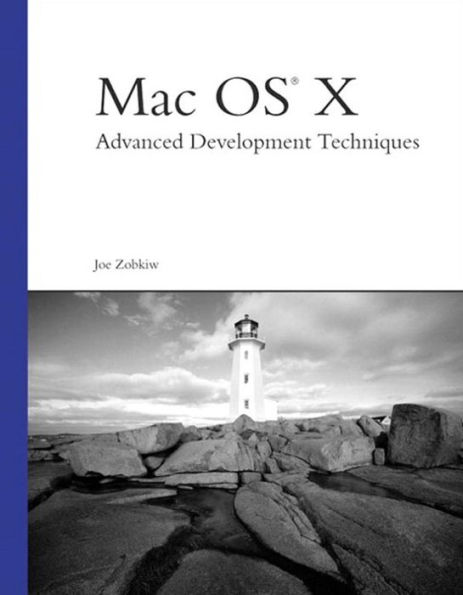Mac OS X Advanced Development Techniques introduces intermediate to advanced developers to a wide range of topics they will not find so extensively detailed anywhere else.
The book concentrates on teaching Cocoa development first, and then takes that knowledge and teaches in-depth, advanced Mac OS X development through detailed examples. Topics covered include: writing applications in Cocoa, supporting plug-in architectures, using shell scripts as startup items, understanding property lists, writing screen savers, implementing preference panes and storing global user preferences, custom color pickers, components, core and non-core services, foundations, frameworks, bundles, tools, applications and more. Source code in Objective-C, Perl, Java, shell script, and other languages are included as appropriate.
These solutions are necessary when developing Mac OS X software, but many times are overlooked due to their complexities and lack of documentation and examples. The project-oriented approach of Mac OS X Advanced Development Techniques lends itself perfectly to those developers who need to learn a specific aspect of this new OS. Stand-alone examples allow them to strike a specific topic with surgical precision. Each chapter will be filled with snippets of deep, technical information that is difficult or impossible to find anywhere else.
Mac OS X Advanced Development Techniques introduces intermediate to advanced developers to a wide range of topics they will not find so extensively detailed anywhere else.
The book concentrates on teaching Cocoa development first, and then takes that knowledge and teaches in-depth, advanced Mac OS X development through detailed examples. Topics covered include: writing applications in Cocoa, supporting plug-in architectures, using shell scripts as startup items, understanding property lists, writing screen savers, implementing preference panes and storing global user preferences, custom color pickers, components, core and non-core services, foundations, frameworks, bundles, tools, applications and more. Source code in Objective-C, Perl, Java, shell script, and other languages are included as appropriate.
These solutions are necessary when developing Mac OS X software, but many times are overlooked due to their complexities and lack of documentation and examples. The project-oriented approach of Mac OS X Advanced Development Techniques lends itself perfectly to those developers who need to learn a specific aspect of this new OS. Stand-alone examples allow them to strike a specific topic with surgical precision. Each chapter will be filled with snippets of deep, technical information that is difficult or impossible to find anywhere else.

Mac OS X Advanced Development Techniques
456
Mac OS X Advanced Development Techniques
456
Product Details
| ISBN-13: | 9780132713924 |
|---|---|
| Publisher: | Pearson Education |
| Publication date: | 04/22/2003 |
| Sold by: | Barnes & Noble |
| Format: | eBook |
| Pages: | 456 |
| File size: | 6 MB |
